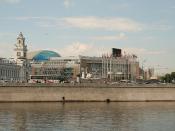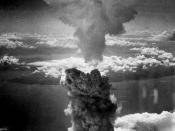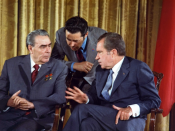After the Cold War, in the absence of USSR, the world strategic pattern transformed at once. The economic rivalries that had long been concealed by the political and ideological conflict with the Soviet sphere popped up immediately and gradually started to escalate. The post-Cold War world structure is "one super and many great powers", which means that there is only one superpower - the United States. But the United States is super only in military affairs. As far as economic strength is concerned, the 12 countries in the European Union had overcome the United States as early as the mid-1980s, and the strength of Japan alone then was 40 percent of the United States'. Therefore the EU countries and Japan together have a larger economy than the US, but their military muscle is far weaker.
The appearance of the European Union compelled the United States to reconsider its global strategy.
Its first reaction was to put forth in 1993 the NAFTA, which, under a 1994 proposal, was to be expanded to cover the two American continents by 2005.
When World War II ended, the overseas investments of the United States were mainly in the Americas, and those in Europe only accounted for 12 percent of the total overseas investments. Then the United States got a foothold in Europe while helping postwar reconstruction, as before the war Europe was the wealthiest and developed area in the world. By the mid-1970s, US investments in Europe accounted for more than half of its total overseas investments. The so-called postwar economic globalization wave referred in fact to the industrial restructuring of the United States and Europe on both sides of the Atlantic. Thus the situation whereby the critical center of US overseas economic interests was in Europe had been formed.
From the end...


